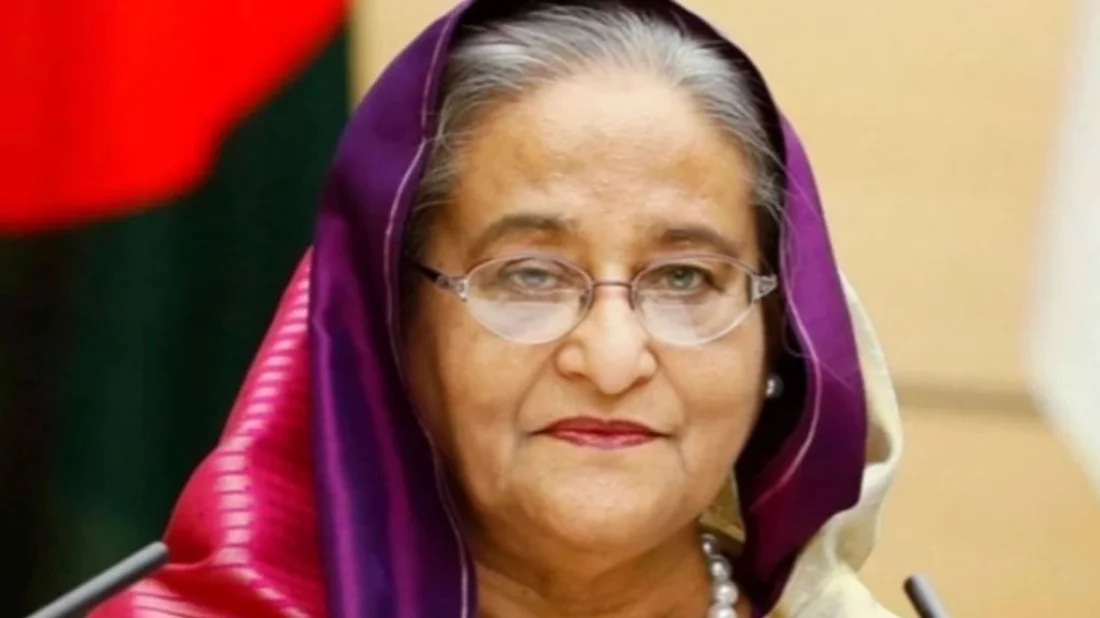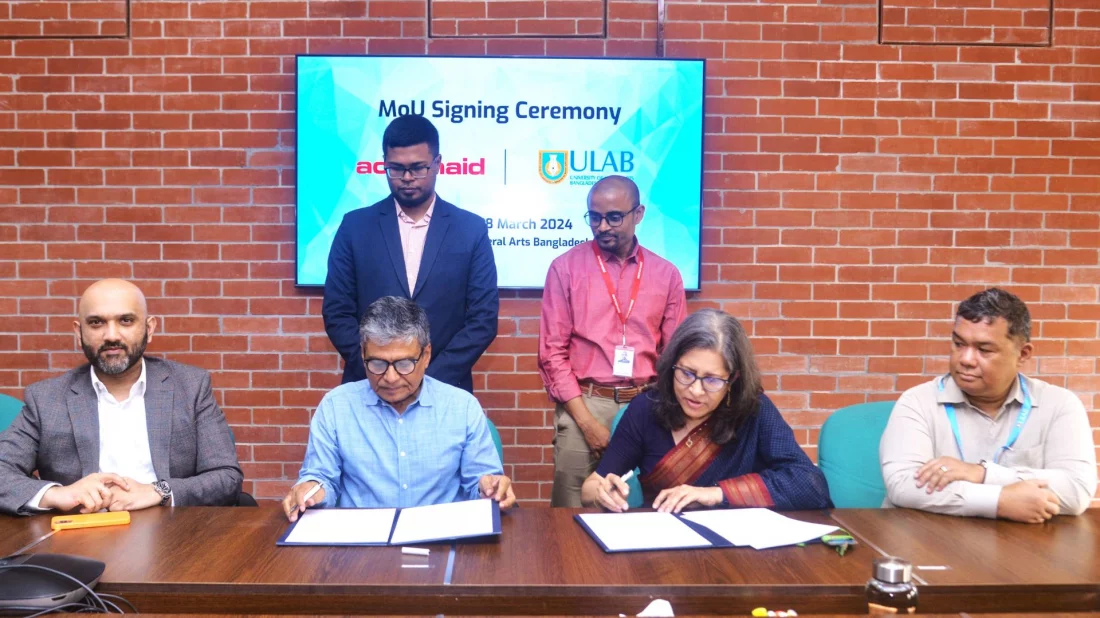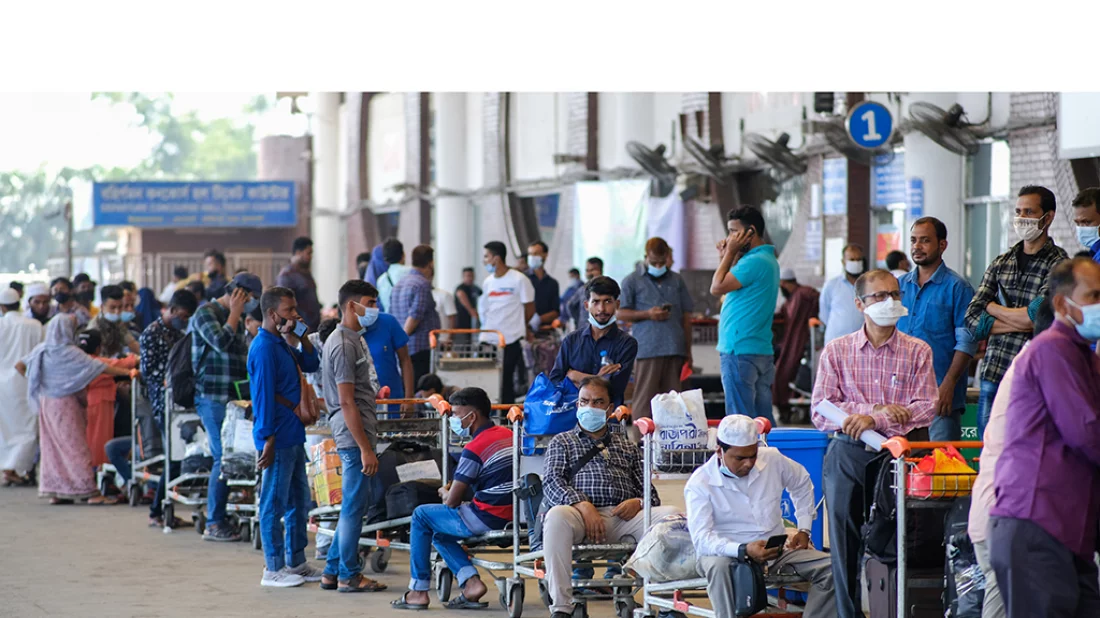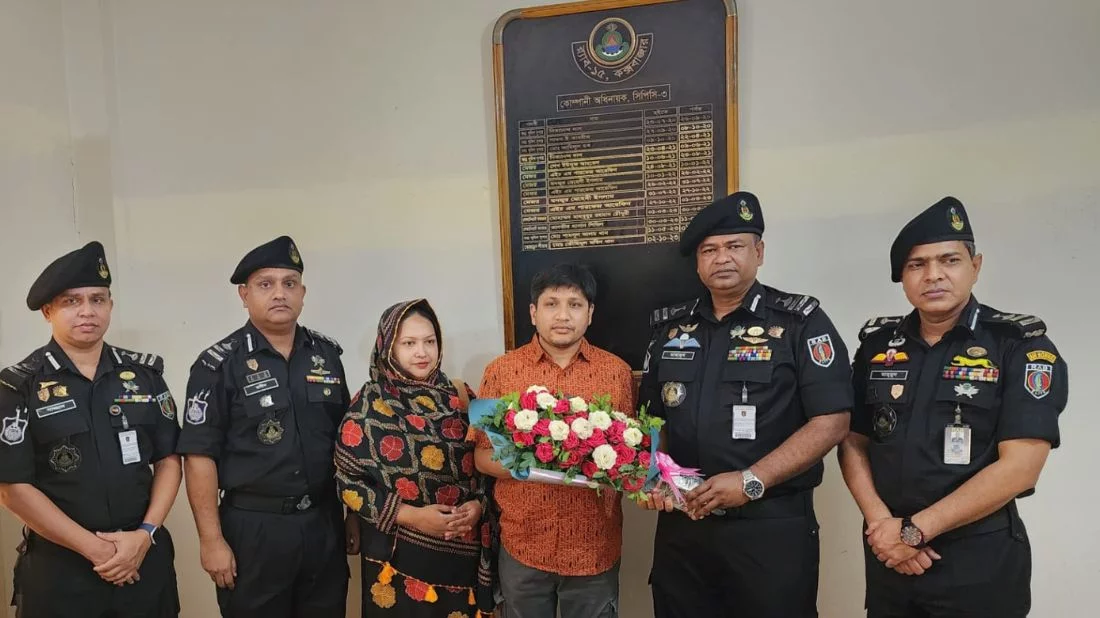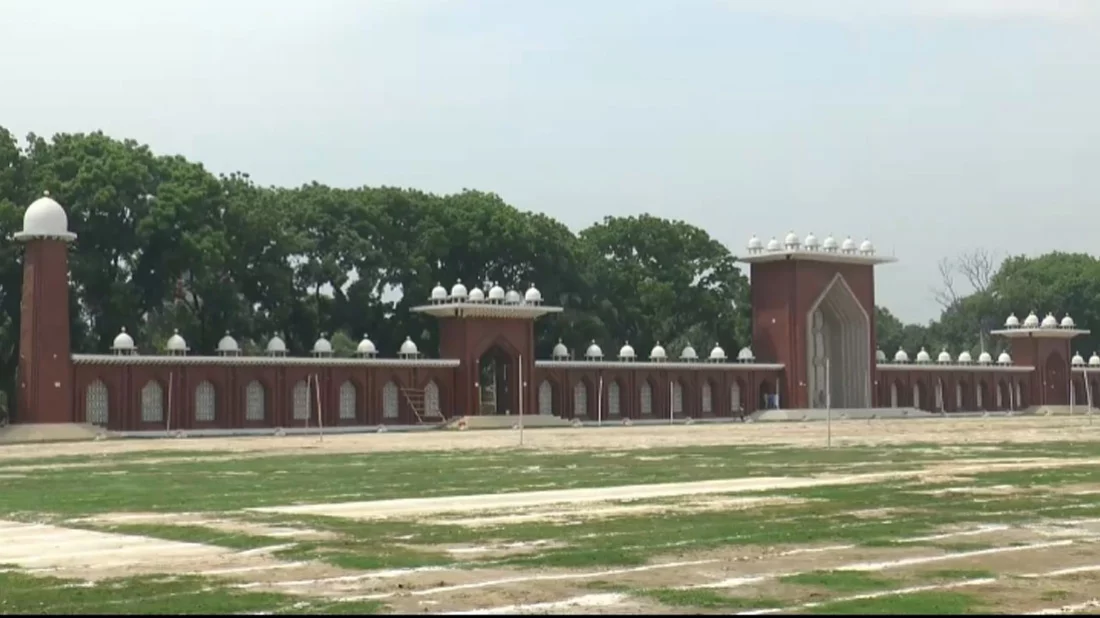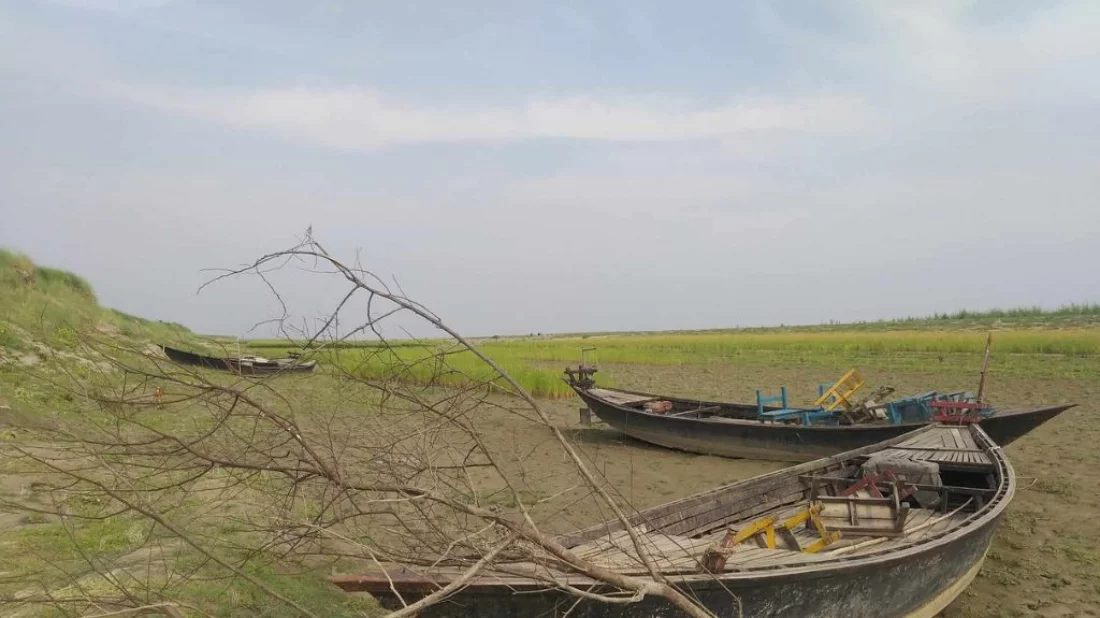
The mighty Padma and other rivers in the north are almost dead. Same are the canals connected to the rivers where the people are cultivating crops such as rice, wheat and corn.
Many farmers have stopped cultivating paddy, which is why the number of cattle is going down and mango orchards are increasing exponentially.
On one hand there is no water in the rivers, and on the other hand, the water level in the region under Rajshahi Barind Multipurpose Development Authority (BMDA) is also going down. The water crisis in the high areas is dire. Apart from Rajshahi and Chapainawabganj, the water crisis has also become acute in the surrounding districts.
Groundwater levels are far below normal amid ongoing heatwaves and severe drought. All over the Barind region, there is a cry for water—a situation which is very common during this season every year.
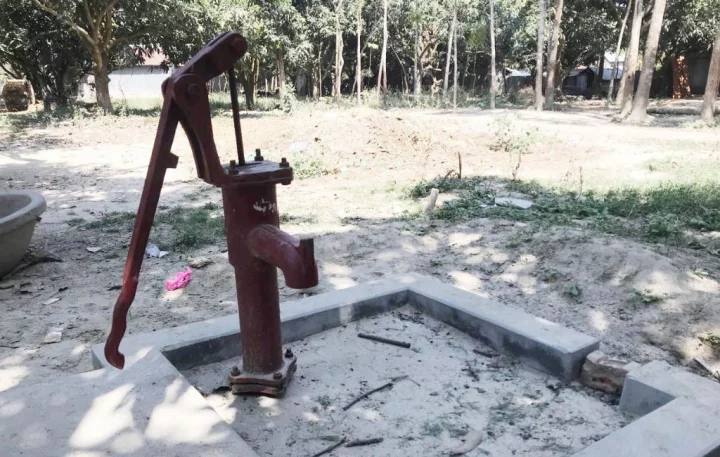 The image shows a tubewell which becomes dysfunctional following the going down of groundwater in Rajshahi. Photo: Dhaka Tribune
The image shows a tubewell which becomes dysfunctional following the going down of groundwater in Rajshahi. Photo: Dhaka Tribune
BMDA Monitoring Officer Ashraful Islam said: “We are encouraging farmers to grow crops that use less water as an alternative to water-intensive Boro paddy by reducing dependence on deep tubewell water. Also, rainwater can be retained and used throughout the year.”
Recently, Rajshahi-6 (Charghat-Bagha) constituency lawmaker and former state minister Shahriar Alam has also highlighted the shortage of clean drinking water in his area due to the depleting water level. He wrote: “People are having problems getting water in Bagha-Charghat area. Additional ponds are being dug and deep tubewells are being installed to fill the ponds with water. I think this is the major reason for the rapid drop in the water level in the area.”
Hundreds of people commented on the post, mentioning the water crisis in their respective areas. One such person is Mahabubur Rahman, who said they are not getting water from the tubewells in Shibpurhat Jagir Para area of Baneswar Union under Puthia Upazila. Irrigation of agricultural land is severely disrupted due to the falling water table. People are completely dependent on motor pumps for drinking water and irrigation.
Another Hamim Hasan wrote that farmers have cultivated various crops, including jute, sesame and corn on hundreds of bighas of land in Raipur village of Vialuxmipur Union of Charghat. But no land was irrigated due to lack of water, and production is hampered.
Hamim said if the crop fields are brought under any irrigation scheme, crop production will be easier. Besides, the tubewells in the area are not working. In this case, submersible pumps have to be installed with government funding to end the suffering of the people.
DASCOH Foundation, a non-government development organization, works on water issues in Rajshahi. Jahangir Alam, a director of the foundation, said the water levels in Bholahat and Shibganj upazilas of Chapainawabganj are relatively better. But excessive levels of arsenic were found in Ranihati Union under Sadar Upazila. Arsenic is also present in some areas in Maharajpur Union.
Jhelim Union of Chapainawabganj Sadar Upazila; Radhanagar, Rahanpur and Parbotipur unions under Gomstapur Upazila, and all the unions of Nachol Upazila are extremely water-stressed areas. The aquifer of all areas except for Basudebpur and Matikata unions of Godagari Upazila in the western part of Rajshahi district is alarming. Water is not available in many places in Pachander, Mundumala, Kalma and Badhaid unions of Tanor Upazila.
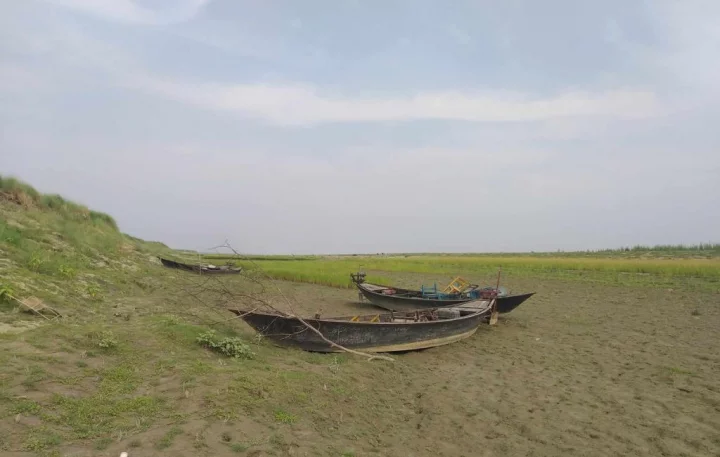 The image shows a dead river in Rajshahi. Photo: Dhaka Tribune
The image shows a dead river in Rajshahi. Photo: Dhaka Tribune
Shifts in agriculture
A recent survey has found an aquifer (underground wet rock) after a bore of 500 metres or 1,600 feet. The aquifer’s thickness is 6-50 feet, Jahangir Alam said. However, the condition of Paba, Mohanpur, Bagmara, Durgapur and Puthia in Rajshahi is somewhat better than Bagha and Charghat.
The survey was conducted for nine years in accordance with the guidelines of the Water Act 2013 by DASCOH Foundation, Swiss Red Cross, Water Resources Planning Organization (WARPO) and the Ministry of Water Resources.
Jahangir Alam also said people are farming fish in the pond by drawing underground water. Once the aquifer dries up, irrigation will be impossible while drinking water will be unavailable. There are many countries in the world where groundwater extraction is prohibited by law.
Due to lack of water, the people of Porsha, Sapahar and Niamatpur of Naogaon are producing mangoes and happily want to declare their area the mango capital. Even five years ago, they were cultivating Aman, Aush and Boro paddies.
He said: “The mango orchards have grown from 5,000 hectares to 40,000 hectares. How will we ensure food security if mango orchards grow like this? Due to the decline in paddy cultivation, cattle are no longer seen in many villages. If there is an orchard, there is no opportunity to grow any kind of crops. For just one month's worth of mangoes, we are losing cropland throughout the year.
“Again, a large number of agricultural workers, especially the tribals, are losing their jobs. Lack of water is going to cause a lot of environmental damage in Barind region which we may not even realize.”
Tubewells dysfunctional
According to the sources in Rajshahi Divisional Department of Public Health Engineering (DPHE), in the eighties and nineties, thousands of manual tubewells were installed in the villages to meet the demand for potable water. But most of those tubewells no longer produce water as the ground water table has gone down.
Therefore, submersible pumps are now being installed in rural areas to meet the demand. Motors are being provided by the DPHE, but many people are installing motors with their own money.
Residents say they are not getting any water from the manual tubewells in Rajshahi city. On the other hand, there is no water in the tubewells in the villages.
Due to shortage of water, Wasa is using high-powered water pumps for extraction of underground water in the metropolitan area. Besides, there are more than 6,000 submersible pumps in the city under private initiative.
Saidur Rahman, mayor of Mundumala Municipality of Tanor Upazila in Rajshahi, said there is more water shortage in Barind area during the dry season. People rely on the deep tubewells and ponds of the BMDA. Others have to collect water from far away. The difficulty of collecting water has now become a big problem for the people of the area.
Due to lack of rain in April-May, the underground water level in the villages of Barind region drops to an alarming level every year. This has been the case for the past few years. This year, the situation has become more critical. The average temperature in Rajshahi region has been fluctuating from 35 to 40 degrees Celsius for the past two weeks.
Rajshahi's Panchandar Union is the hottest area in the country. The water crisis is also high in this area. Sajedul Islam, a resident, said it has become difficult to raise cows and calves due to water shortage. Water is not available even under 150 feet. There is no water in the local ponds.
The BMDA's deep tubewells are operated when there is electricity. Then the villagers gather together with pitchers, buckets, pots and pans to collect water.
Philip Tudu, a tribal resident of Mahalipara village of Mundumala municipality, said many people are meeting their water needs by installing submersible pumps with their own money. “But we are poor people. A submersible pump costs us thousands of takas. So, the BMDA's deep tubewells are our only hope.”
The villages in Godagari are also said to be facing acute water shortage. Manjur Hossain, a resident of Godagari's Lalitnagar area, said earlier people used to think about eating. Now drinking water has become a major concern in the area. Due to lack of water, local people are forced to sell cows and goats.
Zayeda Khatun, a resident of Bagha's Gargari area, said the tubewells in the villages along the banks of the Padma in Rajshahi have not been working since the beginning of April. “Even after an hour of trying, a bucket of water cannot be lifted. Now I have to bring water from the neighbour's house.”
On the other hand, severe drought has increased the irrigation crisis in Boro fields in the Barind region. The BMDA is unable to supply water as per the demand of the farmers.
Harun-or-Rashid, executive engineer of Rajshahi DPHE, said the water level of Barind region falls in April-May every year. “The situation becomes somewhat normal when it rains. The weather in Rajshahi is very hot now. Drought continues throughout April. We are getting complaints that there is some shortage of water in rural areas.”
Professor Chowdhury Sarwar Jahan of the Department of Geology and Mining at Rajshahi University said the underground water level is decreasing in Barind region every year.
“This is a matter of great concern. A direct negative impact of climate change is seen in Rajshahi region. Low rainfall and excessive use of underground water are largely responsible for this. The way out of this situation can be to increase the use of surface water. This can lead to a steady state.”
Bringing water from Padma
Rajshahi Wasa has undertaken a project of bringing potable water from Godagari Point of the Padma River under a Tk4,000 crore project.
The government will pay Tk1,748 crore of the project cost while Hunan Construction Engineer Group Company Limited will provide more than Tk2,313 crore at 2.5-3% interest rate. The duration of the project is four years.
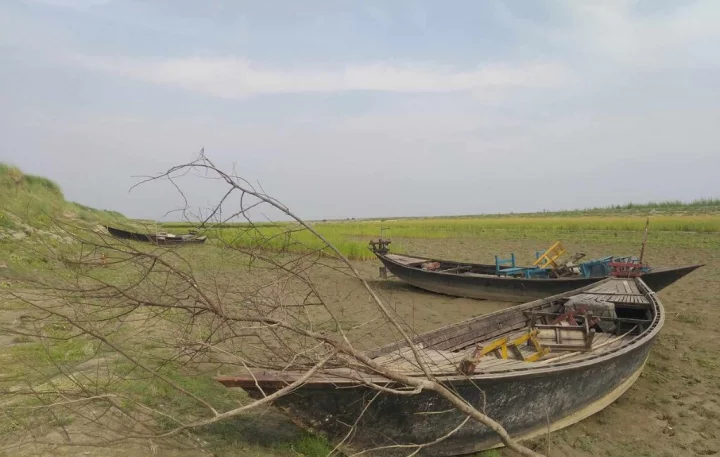 The image shows a dead river in Rajshahi. Photo: Dhaka Tribune
The image shows a dead river in Rajshahi. Photo: Dhaka Tribune
DASCOH Foundation Director Jahangir Alam said it was more important to save the agriculture of Barind region by taking up a similar project like that of Rajshahi Wasa. “The aquifer of Rajshahi city is in a very good state and gets recharged every year during monsoon. Those working at the policy-making level need to make effective decisions to solve water crisis in the region. A dead aquifer cannot be revived after a thousand attempts.”
Under the project, a treatment plant will be set up in Sarengpur area of Godagari Upazila Sadar where the Ganges River enters Bangladesh from India and becomes Padma. The Mahananda River came out as a branch of Padma. This treatment plant will be located at the confluence of the two rivers.
The water here is at least 30 feet deep throughout the year. Before taking up the project, the Institute of Water Modeling (IWM) monitored 30 years of year-round water depth data at the site.
Wasa officials said the daily water demand in Rajshahi city is now 111.32 million litres. To meet the demand, around 86.5 million litres of underground water is pumped daily and only 9 million litres of surface water is treated. That also leaves a shortage of 17.7 million litres per day. There will be no shortage if there is a new plant, officials said.
The draft of the project was completed in 2015 as part of a long-term planning. Then the Development Project Proposal (DPP) was approved on September 11, 2018. Later, in October of the same year, the project was passed in the Executive Committee of the National Economic Council (Ecnec). After conducting surveys, the agreement was signed with the Chinese company.
Managing Director of Rajshahi Wasa Md Zakir Hossain said the place has been determined because there is water in Padma all year round in Sarengpur of Godagari Upazila. Before site selection, the IWM also conducted a survey of 30 years of water statistics. If the project is implemented, Rajshahi Wasa will be able to supply the nearby municipal areas by meeting the needs of the city.



